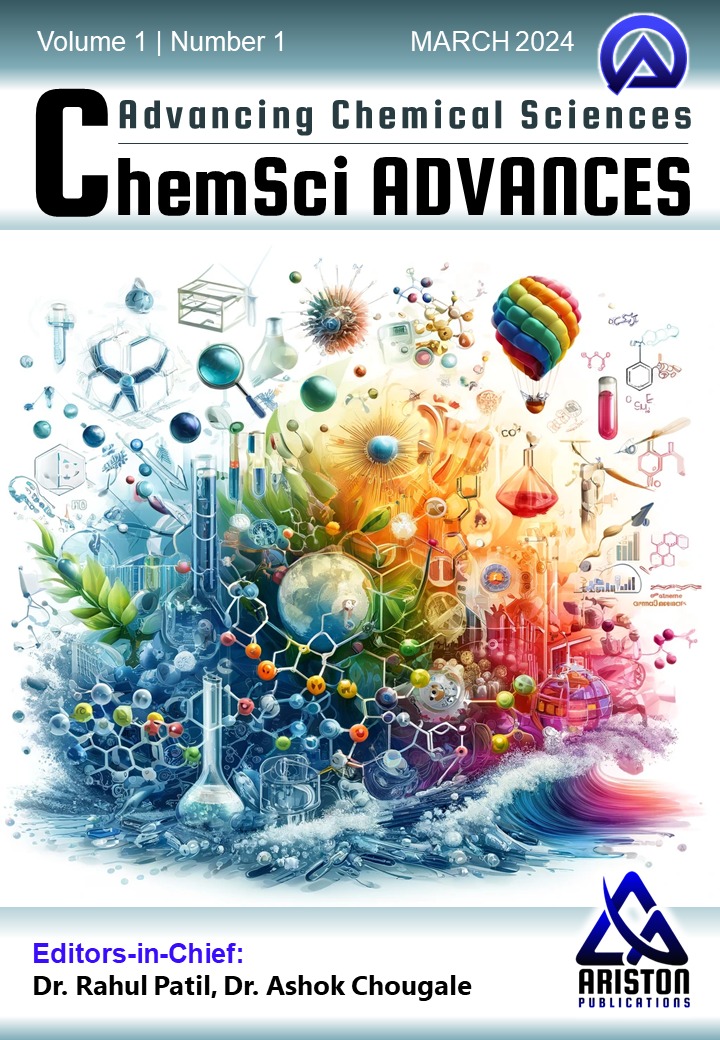V. A. Sadafale
Department of Chemistry, Adarsha Science, J. B. Arts & Birla Commerce Mahavidyalaya, Dhamangaon Rly, Amravati, India.
*Author to whom correspondence should be addressed:
vasadafale1980@gmail.com (V. A. Sadafale)
ABSTRACT
Transition metal complexes of Co(II), Cu(II), Ni(II), and VO(IV) were synthesized using a novel Schiff base ligand derived from the condensation of 4,4’-sulfonyldianiline and (2,4-dihydroxyphenyl)(phenyl)methanone. The ligand and its metal complexes were thoroughly characterized using elemental analysis, FTIR, UV-Vis, 1H-NMR, and mass spectroscopy, confirming their structural integrity. Spectroscopic studies revealed that the ligand coordinates to the metal ions in a bidentate manner through the azomethine nitrogen (–C=N–) and phenolic oxygen (–O–) atoms, forming stable chelates. Thermogravimetric analysis (TGA) was performed under a nitrogen atmosphere at a heating rate of 10°C min⁻¹, demonstrating the thermal stability and decomposition patterns of the complexes. Kinetic parameters for thermal degradation were calculated using the Freeman-Carroll and Sharp-Wentworth methods, providing insights into their thermal behavior. The antimicrobial activity of the ligand and its metal complexes was evaluated against Gram-positive (Staphylococcus aureus) and Gram-negative (Escherichia coli, Pseudomonas aeruginosa, Klebsiella pneumoniae) bacteria using the agar well diffusion method. The Cu(II) complex exhibited the highest inhibitory effect, particularly against S. aureus, suggesting enhanced bioactivity upon metal coordination. This study highlights the structural, thermal, and biological properties of sulfonamide-based Schiff base metal complexes, emphasizing their potential as antimicrobial agents and contributing to the broader understanding of coordination chemistry in medicinal applications.

Significance of the Study:
This study highlights microwave-assisted synthesis (MAS) as a green, efficient approach for preparing Schiff bases and their metal complexes, overcoming limitations of conventional methods. MAS enhances reaction rates, reduces energy consumption, and minimizes solvent use, aligning with sustainable chemistry principles. The review underscores MAS’s role in improving product purity, crystallinity, and yield while exploring its integration with other eco-friendly techniques. These advancements are crucial for expanding applications in medicinal chemistry, catalysis, and materials science, offering a sustainable pathway for future research and industrial scalability.
Summary of the Study:
The review examines microwave-assisted synthesis (MAS) of Schiff bases and their metal complexes, emphasizing its advantages over traditional methods, including faster reactions, higher yields, and reduced environmental impact. It discusses structural characterization, applications, and challenges like scale-up limitations and solvent dependency. Future directions propose integrating MAS with ultrasound or mechanochemistry and leveraging computational tools for optimization. By addressing these challenges, MAS can advance green chemistry and expand the functional diversity of Schiff base complexes for biomedical and industrial applications.
